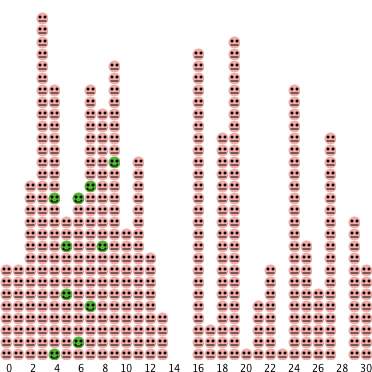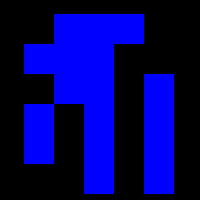Integrated Simulation and Modeling Environment
Classroom Resources
Main Page, Papers & Presentations, Tools & Technology, Classroom Resources
The ISME project brings the study of complex systems to classrooms. We believe that, given appropriate design and supporting technology, young learners can experience some of the fundamental ideas of complex-systems theory. In our implementations, we promote students' learning of the domain and research this learning. Toward that objective, we keep modifying our computer models, classroom activities, and teacher documents.
One central theme in the study of complex systems is that there are interesting and unexpected connections between behaviors of local elements within a system and the behavior of the system as a whole. For instance, the stock market may manifest trends that are very difficult to predict, because these trends reflect the accumulated actions of numerous individual agents, who constantly update their behavior in response to what they themselves perceive as the state of the system they are part of. The gist of our designs is that a classroom can model a complex system: The local interactions of students can give rise to complex behaviors at the classroom level. The classroom is large enough to show complexity, yet small enough to wrap your head around this complexity. We call this design a Participatory Simulation: Students participate personally in simulating some phenomenon that they are studying -- a phenomenon involving interacting elements. These elements, together with the context and the elements rules of behavior, make up the model of the complex system that is being studied. For instance, in order better to understand how a disease propagates in a population, students get to play the roles of individuals in this population.
Participatory simulations can take place in the classroom physical space (actually moving around with your body), but they can also happen in virtual space (moving around in a space that is projected on a classroom overhead screen). It is in virtual space that our HubNet participatory simulations take place. The simulations are technology-based learning games that include and engage all the students in the classroom. Just like scientists run experiments, so the classroom can plan and run the simulations over several rounds each lesson. Between rounds, the facilitator and students discuss their individual and shared experiences, reflect on the meaning of these experiences, interpret the quantitative representations on the screen (in monitors and graph plot windows), plan further experiments, and predict the anticipated outcomes of these experiments.
Some of the specific HubNet activities we are studying are Disease, Gridlock, Function, S.A.M.P.L.E.R., and VBOT. These activities, which share themes of complex systems, are in different domains of study, such as epidemiology, urban engineering, mathematics, and robotics. Additional activities can be found in our models library. Also, NetLogo and HubNet users outside of the CCL are developing their own participatory simulations. Our vision is a modeling-and-simulation environment and culture in which learners and educators can harness technological resources for exploring ideas that have formerly been very difficult to approach.
Featured HubNet activities:
Participatory Simulations Disease
Disease Elevators
Elevators Function Activity
Function Activity Gridlock
Gridlock S.A.M.P.L.E.R.
S.A.M.P.L.E.R.
 The Hawk-Dove Game
The Hawk-Dove Game Ultimatum
Ultimatum
Curricular Units
 ProbLab
ProbLab
Hubnet Guides
 Hubnet Computer Guide
Hubnet Computer Guide
 Hubnet Calculator Guide
Hubnet Calculator Guide
Additional Models
 Genetic Algorithm
Genetic Algorithm
 Central Limit Theorem
Central Limit Theorem
 Neural Network
Neural Network